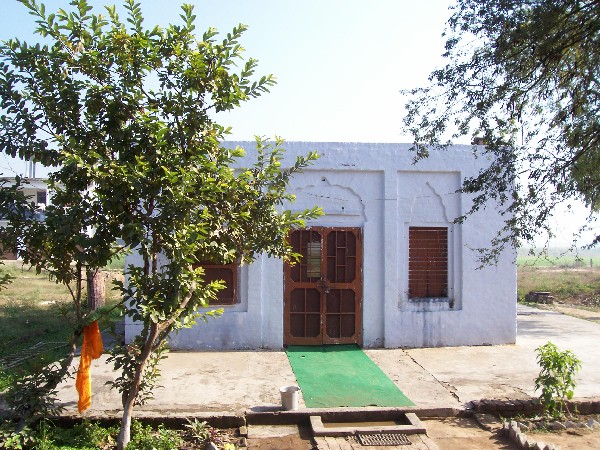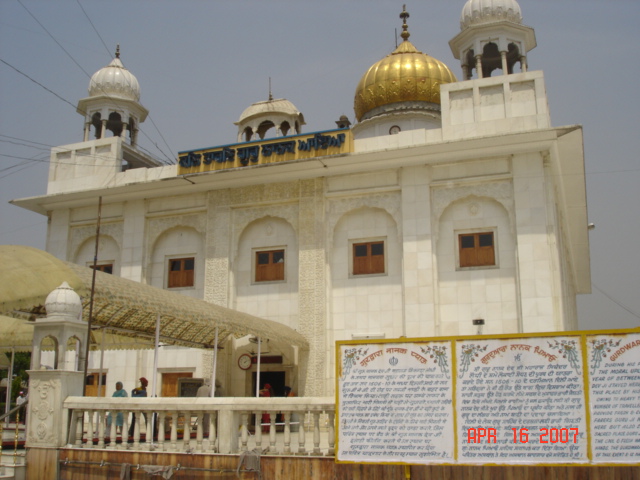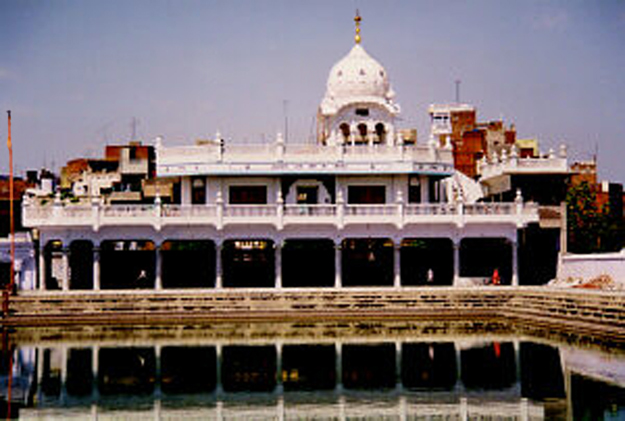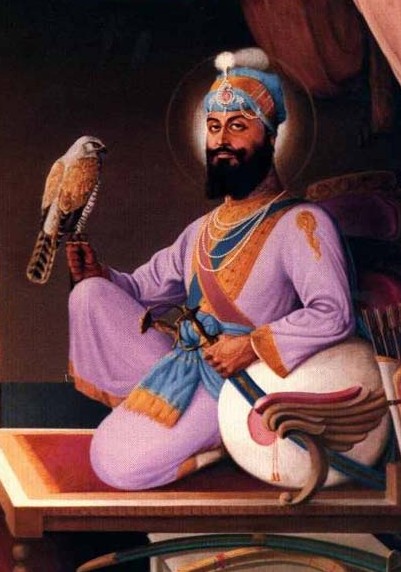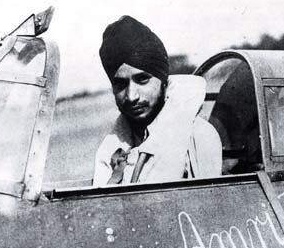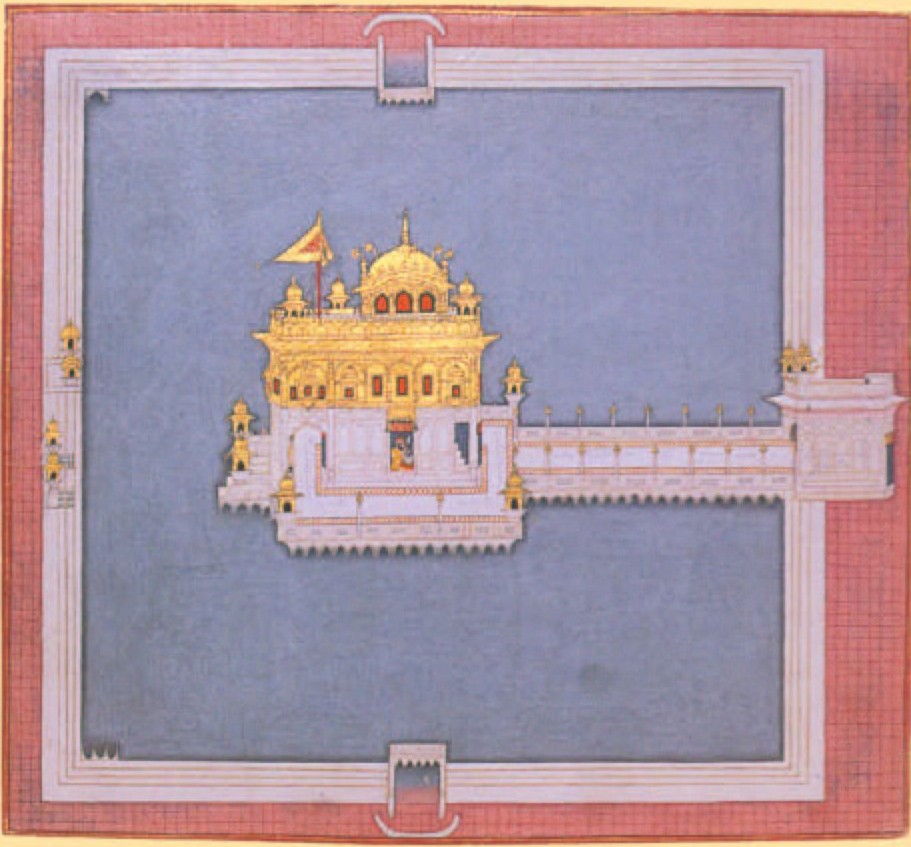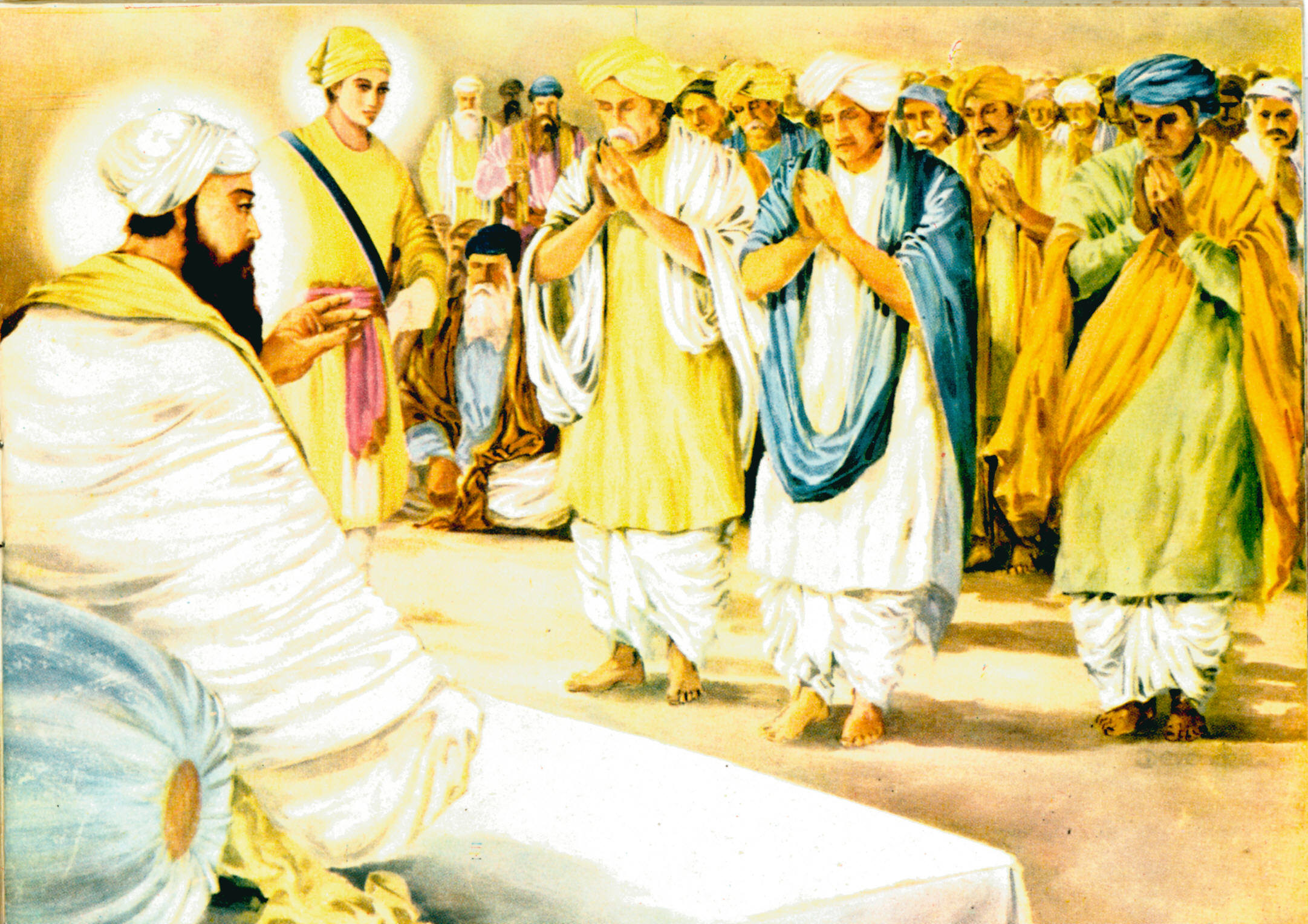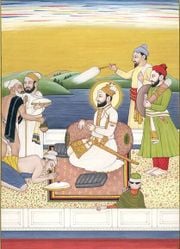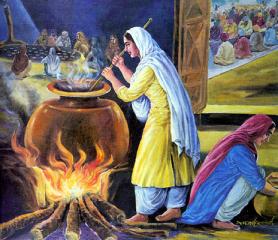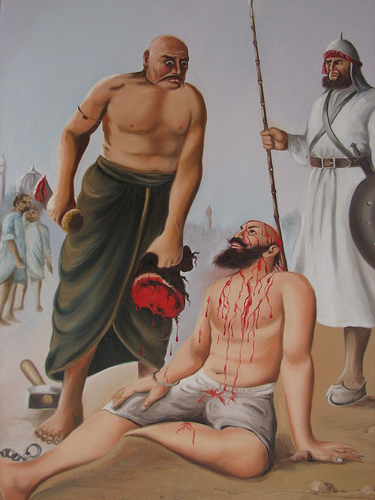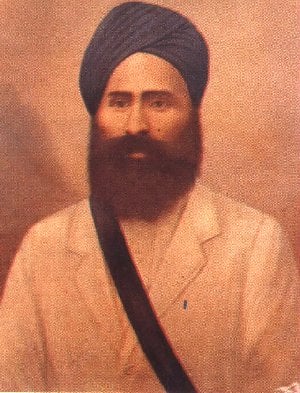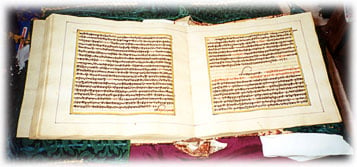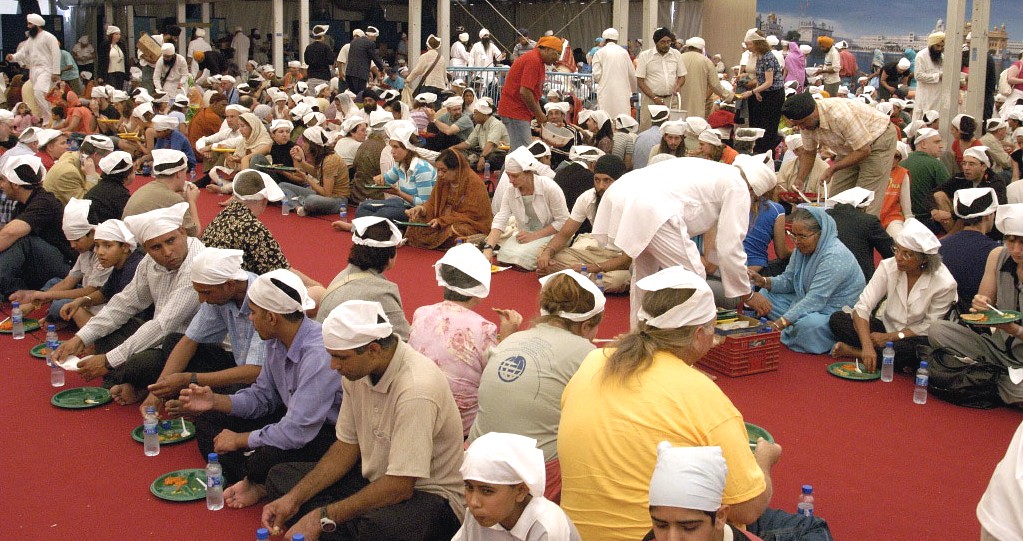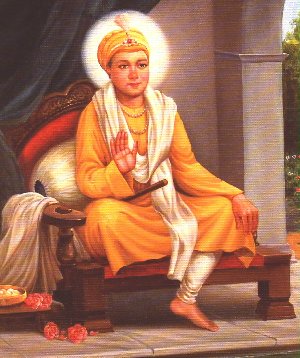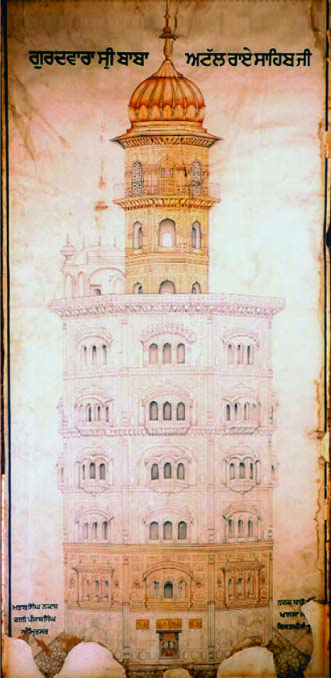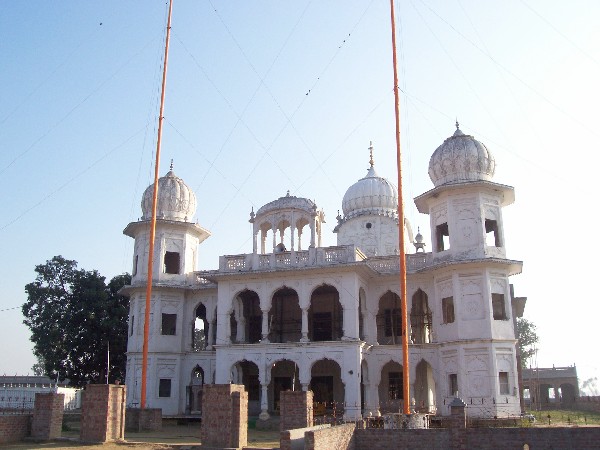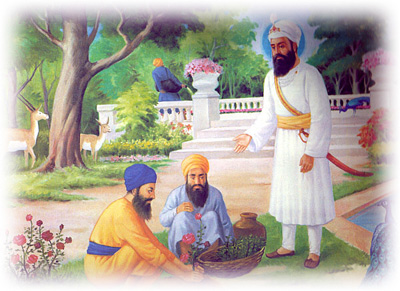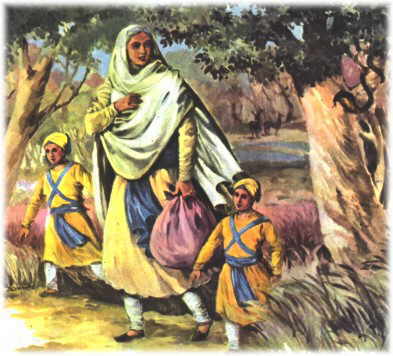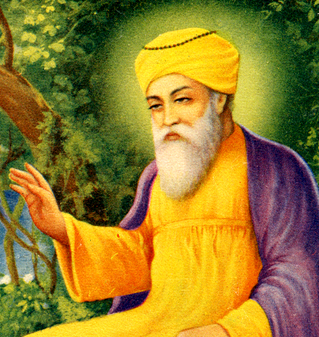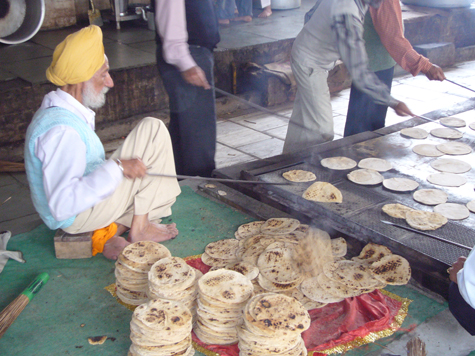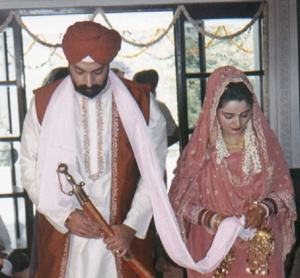SikhiWiki:Today's featured article/July 2009
Today's featured article archive
2007 -
2008 -
2009 -
2010 -
January - February - March - April - May - June - July - August - September - October - November - December
Today is Tuesday, November 4, 2025; it is now 23:05 UTC
Featured content:
| << | Today's featured articles for July 2009 | >> | ||||
| Su | Mo | Tu | We | Th | Fr | Sa |
| 1 | 2 | 3 | 4 | |||
| 5 | 6 | 7 | 8 | 9 | 10 | 11 |
| 12 | 13 | 14 | 15 | 16 | 17 | 18 |
| 19 | 20 | 21 | 22 | 23 | 24 | 25 |
| 26 | 27 | 28 | 29 | 30 | 31 | |
- July 1
Gurdwara Baba Jaani Shah is a holy Sikhs shrine (Gurdwara) situated in the township of Sri Hargobindpur in Gurdaspur District, along with Gurdwara Damdama Sahib.
It is a small square shaped building which contained the Mazhar Of Baba Jaani Shah. Now within this building the parkash of Guru Granth Sahib is done here as well.
Baba Jaani Shah was devotee of sixth Guru, Guru Har Gobind who was in the search of God but could not find Him anywhere; although he had looked far and wide. Then guided by Khwaza (Guru's servant), Babaji met Guru Hargobind and got much joy and internal satisfaction, relief and eventually salvation.
The history (sakhi) relating to Gurdwara Baba Jaani Shah is recorded as follows:
One day, Sayyed Jaani Shah a Muslim devotee got a great urge and intense longing to find and connect with God. He left his family in the hope of finding a path to God. He disguised himself as a faqir (religious man) and set off on his trip to find eternal peace. .....More
view – talk – edit – history
- July 2
Gurdwara Nanak Piao is a historic Gurdwara located in north Delhi in India. This Gurdwara sahib is dedicated to the first Sikh Guru, Sri Guru Nanak Dev.
This Gurdwara was built at the site where Guru Nanak Dev camped, in the garden when he visited Delhi in 1505 during the reign of Sultan Sikander Shah Lodhi. It is situated on Rana Pratap Road (also known as Grand Trunk Road or GT Road).
It is said that people flocked to the revered prophet and offered him and Bhai Mardana precious gifts and offerings. Guru Nanak used to distribute all these offerings to the poor and needy.
Besides this, he used to offer food and water to the hungry and thirsty, hence the name of the shrine. The word "Piao" mean to "offer liquid to drink" and refers to the offering of water to all the thirsty who visited this shrine.
Even today, the well used by the Guru is preserved and one can still see the well from which Guru Nanak served water at the shrine. Consequently, over time Gurdwara Nanak Piao attained a status of a holy and revered historical shrine. .....More
view – talk – edit – history
- July 3
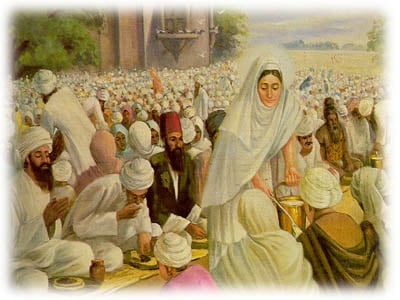
Mata Khivi (1506 - 1582) was born in 1506 to Karan Devi and Bhai Devi Chand Khatri in a small town called Sanghar which is now located in the province of Sindh in Pakistan.
Her father was a shopkeeper and trader, and was a popular man in the neighbourhood. His daughter inherited all his finest attributes of generosity and congenial spirit.
She was married in 1519, when she was 13 years old. Khivi was married to Lahina for 20 years before he became the second Guru of the Sikhs.
There is historical evidence that she had 4 children. Dasu, the eldest was born in 1524. Bibi Amro was born in 1532, followed by Bibi Anokhi in 1535 and son Datu in 1537. The family was content and doing well. As the wife of one of the town's richest men, Khivi must have enjoyed a great deal of respect. Her life was one of luxury and pleasure. .....More
view – talk – edit – history
- July 4
Mata Kaulan was a women who was a free spirit and wanted to explore her surroundings. She had been adopted by a Muslim priest called Rustam Khan. He was based in Lahore, located in present-day Pakistan.
Qazi Rustam Khan had bought her from her parents while she was a child. It is possible that her parents were Hindus. The Qazi gave her the education of Islam and sent her to Saint Mian Mir for higher schooling.
Saint Mian Mir was a Sufi saint. He had no prejudice against any religion. He had a very deep love with Guru Nanak's Institution. It was usual for him to go to Amritsar to meet the Guru Arjan Dev ji.
Whenever the Guru visited Lahore, he never went back without seeing Saint Mian Mir. Due to these meetings, Saint Mian Mir knew a large number of Guru's verses by heart which he used to quote to his disciples.
Bibi Kaulan also remembered some of the verses by heart which she used to recite herself as she found them very touching and allowed her to relate to God. .....More
view – talk – edit – history
- July 5
On 5 July every year, the Sikhs celebrate the birthday of their sixth Master, Guru Har Gobind (5 July 1595 - 19 March 1644).
Guru sahib was born at village Guru Ki Wadali in district Amritsar on 5 July 1595 and was the only son of Mata Ganga and Guru Arjan, whom he succeeded on 11 June 1606 at the age of only 11 years old.
The young Hargobind received his early education and training from the revered Sikhs leaders of the time Baba Buddha, the first granthi and Bhai Gurdas, the scribe of the Sikh holy script, Guru Granth Sahib.
Guru Hargobind was married in about 1610 to Mata Nanaki also known as Mata Marwahi or Mata Mahadevi. They were endowed with a large family consisting of one daughter Bibi Viro and five sons: Baba Gurditta, Suraj Mal ji, Ani Rai ji, Atal Rai ji and Tegh Bahadar ji.
Guru Hargobind was responsible for wearing two kirpans - one for Miri (temporal protection) and one for Piri (spiritual reasons) and began the rapid and irreversible militarization of the Sikh people. It was due to the tragic martyrdom of his father, Guru Arjan that the sixth Guru changed the Panth into an effective, brave and determined army of religious supporters. .....More
view – talk – edit – history
- July 6
Squadron Leader Mahinder Singh Pujji was the last surviving fighter pilot from a group of 24 Indians who arrived in Britain in 1940; he was awarded the Distinguished Flying Cross for bravery.
An Indian pilot who flew Hawker Hurricanes during World War II has died, it has been announced. Squadron Leader Mahinder Singh Pujji, 92, who lived in Gravesend, Kent, UK died at at Darent Valley Hospital in Kent on Saturday following a stroke.
Sq Ldr Pujji, who learned to fly as a hobby in India, sailed to England after reading an advert in a newspaper. He warned his family he might never return. He began training in the autumn of 1940 and early the next year began flying Hurricanes protecting coastal convoys and intercepting bombers and fighters when Hitler ordered the bombing of London in the Blitz.
He survived several crashes and flew combat missions throughout the war in Britain, Europe, North Africa, the Middle East and Burma and was awarded the Distinguished Flying Cross. .....More
view – talk – edit – history
- July 7
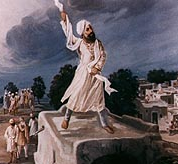
Makhan Shah Labana (Punjabi: ਮੱਖਣ ਸ਼ਾਹ ਲਬਾਣਾ), was born on 7 July, 1619. He was a devout Sikh and a rich trader from Tanda district, Jhelum (now in Pakistan). He is called "The discoverer of the ninth Nanak" for his famous act of finding the ninth Sikh Guru, Guru Tegh Bahadur in Bakala, India in around 1665. The Sakhi (true story) of that discovery was recorded in "Janamsakhis" and has been told as a story among the Sikhs for many generations.
Baba Makhan Shah was born to Mata Vijey Devi. His father was named Bhai Dasa. He was born on 23 Ashad 1676 Bikarami, which translates to 7th July, 1619. Macallife, Teja Singh, Ganda Singh and Colonel Gurcharan Singh support this date; however the historical record of Makhan Shah is not complete.
He got his basic education from Vijaynagar. He was a master in Sanskrit language and also learned many foreign languages including Portuguese and English, which were picked up during his sea travels as a trader. He was not a good speaker of Punjabi; Lubanki was his mother tongue and that is why when he found Guru Tegh Bahadur he shouted GURU LADHO RAE (which means "Found the Guru" in Lubanki.) .....More
view – talk – edit – history
- July 8
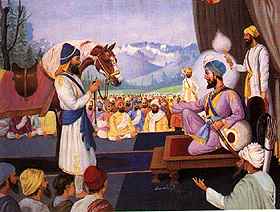
Once when Guru Arjan's wife, Mata Ganga ji was serving Langar to Bhai Buddha ji, he said,
"As you have given me food to my heart's content, so shall you have a son to your heart's content. He shall be very handsome and brave and shall possess power on earth and in heaven. He shall wear two swords and be mighty in battle. He shall sit on a great imperial throne. He shall be both a great warrior and an exalted Guru."
In time, a beautiful son was born to Guru Arjan and Mata Ganga and he was named Hargobind. His childhood was full of trials because his uncle Prithia wanted his own son, Mihrban, to be the next Guru. He survived these trials and at the proper age received his education from Bhai Buddha and Bhai Gurdas.
They instructed Hargobind in the Guru's shabads (hymns), the sciences, reading and letters, offensive and defensive weapons, sports such as swimming and gatka, administration and many other skills that he would need to be a great spiritual ruler in the future. He grew up in the court of Guru Arjan and watched his father compile the Guru Granth. .....More
view – talk – edit – history
- July 9
Sikh Gurdwaras Act, 1925 was a piece of legislation passed by the Punjab Legislative Council on 9 July 1925.
It marked the culmination of the struggle of the Sikh people from 1920-1925 to wrest control of their places of worship from the mahants or priests.
The Gurdwaras had passed into their hands during the eighteenth-century when the Khalsa were driven from their homes to seek safety in remote hills and deserts.
When they later established their sway in Punjab, the Sikhs rebuilt their shrines endowing them with large jagirs and estates. The management, however, remained with the priests, belonging mainly to the Udasi sect, who, after the advent of the British in 1849, began to consider the shrines and lands attached to them as their own personal properties and to appropriating the income accruing from them to their private use.
Some of them alienated or sold gurdwara properties at will. They had introduced ceremonies which were distasteful to orthodox Sikhs. Besides, there were complaints of immorality against them. All these factors gave rise to what is known as the Gurdwara Reform movement during which Sikhs had to court jail on a large scale and suffer atrocity and death to get control of key Sikh shrines. .....More
view – talk – edit – history
- July 10
It is well known that alcohol is a drug. It has an almost immediate effect on the brain and will alter ones mood. Drinking alcohol makes people feel relaxed, happy and even euphoric, but in reality alcohol is a depressant.
Depressants are psychoactive drugs which temporarily diminish the function or activity of a specific part of the body or mind. Alcohol switches off the part of the brain that controls judgement, leading to loss of inhibitions.
Drinking even small amounts of alcohol can affect physical coordination and stability. Prolonged and heavy alcohol use poses serious health risks. Alcohol is one of the major causes of liver cirrhosis (irreversible scarring of the liver).
This happens because healthy liver cells die and the dead cells are replaced by fibrous tissue.
Some of the other risks of alcohol are:
|
|
The Guru Granth Sahib forbids drinking alcohol. The Guru says:
- "Drinking wine, his intelligence departs, and madness enters his mind;"
- "He cannot distinguish between his own and others,"
- "He is struck down by his Lord and Master" (SGGS p554)
.....More .
view – talk – edit – history
- July 11
On July 11 1675, the ninth Sikh Guru, Guru Tegh Bahadur sets off from Anandpur sahib for Delhi in what was to become a world first; the sacrifice of his life for the religious rights and freedoms of the Kashmiri Pandits.
This was to be the first step and the beginning of an extremely important event in Sikh history. It was to have a profound impact on the future direction of Sikhism, the religion of the Sikhs.
Guru Tegh Bahadur undertook the supreme sacrifice for the protection of the most fundamental of human rights - the right of a person to freely practice his or her religion without interference or hindrance. In modern times, we tend to take this freedom for granted – but in 1675, millions of people were denied this basic right.
However, what is even more astonishing is the fact that the Guru was not protecting the right of the Sikhs to practise their religion but instead the rights of the non-Sikh peace-loving people from Kashmir. .....More
view – talk – edit – history
- July 12
In the time of Sri Guru Hargobind Sahib Ji during the 1600's, there was a poor Gursikh who lived alone in a tiny, little mud hut on the outskirt of a small village. This Gursikh was blind and had a lot of Pyaar (love) for the Guru. He had heard about the powerful Guru who was the protector of the meek and poor.
As he couldn't travel anywhere he would ask people to go to see Guru ji and then wait for their return to hear about the Guru. He would ask them - What does my Guru Ji look like? How brave is he? What weapons does he keep? What stories does he tell, etc and each would reply "The Guru's description is beyond speech. He is too handsome and far too powerful to be described verbally by mere words - I don't have the words to explain all his marvellous virtues."
One night he could not sleep; he kept thinking of Guru ji and how wonderful he was. He longed so much to see the beautiful Mukh (appearance) of Guru Maharaj. The pain of the longing got too intense; he could not take it any longer. The separation was becoming unbearable. He felt angry at himself and began to blame himself for his predicament. .....More
view – talk – edit – history
- July 13
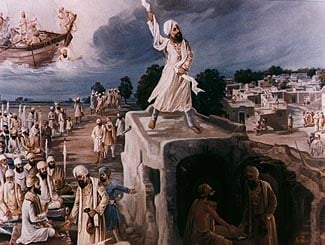
Lobanas are a community of Sikhs who played an important role during the times of the Sikh Gurus. Several key incidents in the times of the ninth and tenth Gurus are attributed to this Sikh community.
Baba Makhan Shah was a devout Sikh and was responsible for finding the ninth Sikh Guru, Guru Tegh Bahadur and Lakhi Shah Vanjara was responsible for cremating the body of ninth Guru in his own house. Lobanas also fought many wars with Guru Gobind Singh and Baba Banda Singh Bahadur.
Lobanas are a tribe who live all over India. Labanas have their own language called "Lubanki" which is a dialect. However, this language is only spoken by Labanas outside the Punjab, state of [[India[[. The Labanas of Punjab and Haryana are mostly Sikhs and speak mainly Punjabi or Hindi.
The term Lobana appears to have been derived from LUN ("salt") and the BANA ("trade"). The Lobanas were the great salt-carrying and salt-trading community. They were occasionally called "Banjaras". In Punjab, they were known by several different names. In Ambala district, for example, on account of their versatility in adopting different vocations, the Lobanas were called "Bahrupias" .....More
view – talk – edit – history
- July 14
Degh Tegh (Punjabi ਦੇਗ ਤੇਗ) or Degh Tegh Fateh: This term forms part of the Sikh Ardas where it is recited in the line: "ਦੇਗ ਤੇਗ ਫਤਹ, ਬਿਰਦ ਕੀ ਪੈਜ, ਪੰਥ ਕੀ ਜੀਤ...." "Daeg taeg fateh, bihrd kee paaej, Panth kee jeet....".
The first phrase is "Daeg taeg fateh" which means victory to "degh and tegh"; the second phrase is "bihrd kee paaej" or "protecting the honour or respect of the old or elderly" "and the third phrase is "Panth kee jeet" or "victory to the panth or 'followers of the righteous path'". In this article, we will just look at the first phrase: "Daeg taeg fateh". The word "fateh" in Punjabi means "victory" or "victorious".
The word "degh" means "large cooking pot" or "cauldron" or an "offering". The word "tegh" means "sword" or "kirpan". The term "degh tegh" refers to the concept of "degh" which is the serving of food to the community as in respect of the Langar; and "tegh" which is the protecting the liberty and rights of each member within the community.
The two concepts of making sure that everyone in the community is fed and does not go hungry; and also that no one's life in the community is in any danger and that all in society feel safe and protected are both concepts equally promoted by Sikhi and the Sikh Gurus. .....More
view – talk – edit – history
- July 15
Bhai Taru Singh (c. 1720 - 16 July, 1745), a Sikh martyr who was a Sandhu Jatt of Puhia village, now in Amritsar district of the Punjab.
He was a pious Sikh who following the teachings of the Sikh Gurus; worked hard tilling his land diligently and lived frugally; although not a rich man, he was always happy and did much for his Sikh brothers and sisters.
Whatever he saved went to his Sikh brethren forced into exile by government persecution. He was spied upon by Akil Das (also known as Harbhagat Niranjania) of Jandiala, a government informer and subsequently, Taru Singh was hauled before Zakariya Khan, the governor of Punjab who was based at Lahore.
Born in Punjab during the reign of the Mughal Empire, Bhai Taru Singh was raised as a Sikh by his widowed mother. During this time, Sikh revolutionaries were plotting the overthrow of the Khan and had taken refuge in the jungle. Bhai Taru Singh and his sister gave food and other aid to these Sikh fighters.
Akil Das, having informed Zakaria Khan and the government authorities about both Bhai Taru Singh and his sister, the two were arrested for treason. .....More
view – talk – edit – history
- July 16
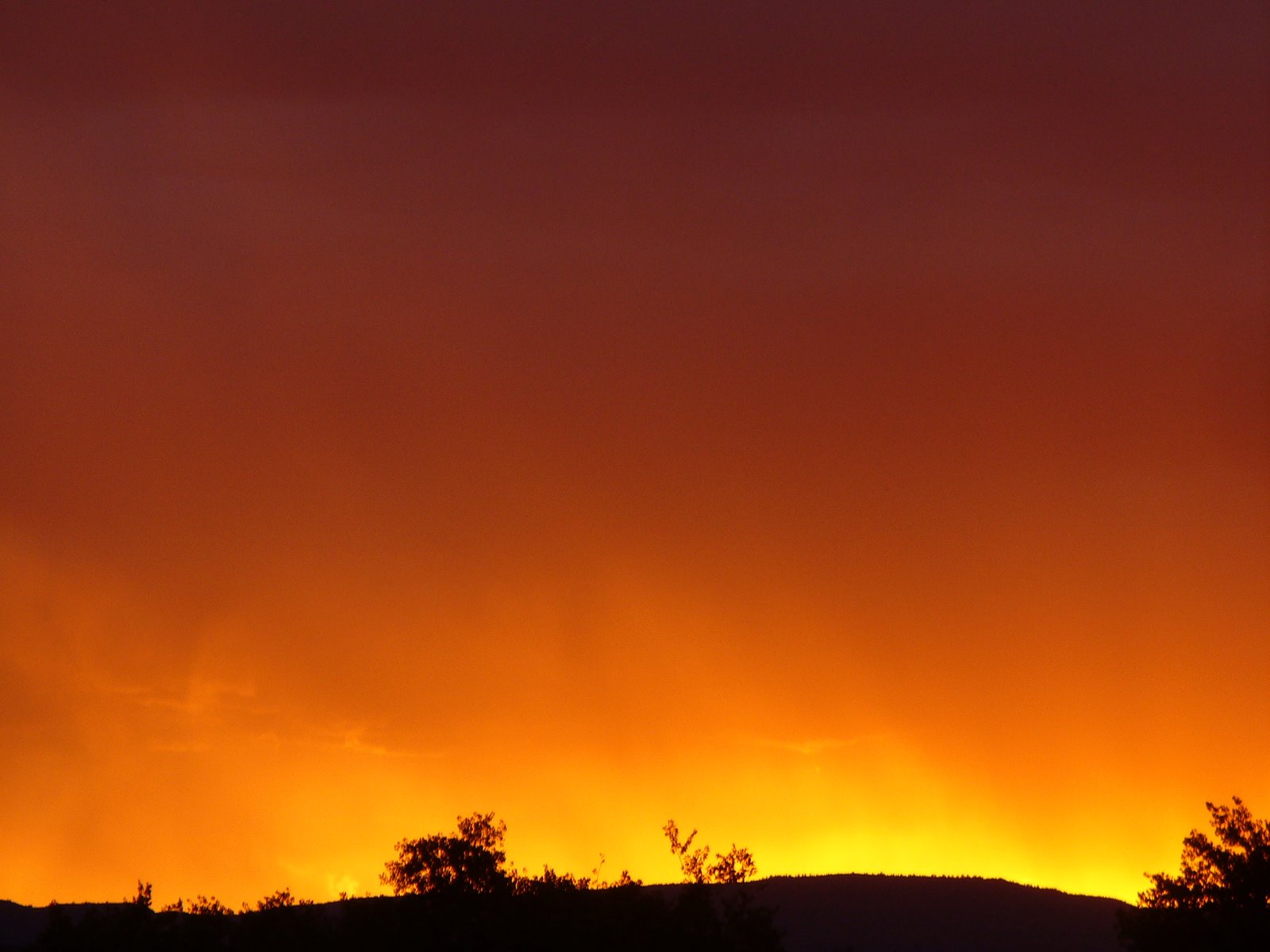
(photo:Prabhu Singh)
Sawan (pronounced "Saa-vn") is a fifth month in the Nanakshahi calendar, which govern the activities within Sikhism. This month coincides with July/August of the Western/Georgian/Julian Calendar and is 31 days long.
The month starts on July 16 and ends on August 15. On August 16 starts the sixth month in the Sikh calendar called Bhadon. The season in Punjab, the land of the Sikh Gurus is mid-summer and the climate is very hot. Temperatures can go as high as 40 degrees centigrade. Most tourists and local move into higher and more northern states to lower temperatures.
The Guru tells us that in the month of Sawan (July/August): "... the soul-bride is happy, if she falls in love with the Lotus Feet of the Lord. Her mind and body are imbued with the Love of the True One; His Name is her only Support. The pleasures of corruption are false. All that is seen shall turn to ashes. The drops of the Lord's Nectar are so beautiful! Meeting the Holy Saint, we drink these in. The forests and the meadows are rejuvenated and refreshed with the Love of God, the All-powerful, Infinite Primal Being. My mind yearns to meet the Lord. If only He would show His Mercy, and unite me with Himself! Those brides who have obtained God-I am forever a sacrifice to them. O Nanak, when the Dear Lord shows kindness, He adorns His bride with the Word of His Shabad. Saawan is delightful for those happy soul-brides whose hearts are adorned with the Necklace of the Lord's Name. ॥6॥" (SGGS page 134) .....More
view – talk – edit – history
- July 17
Teja Singh Samundri (20 February, 1882 - 17 July, 1926), a leading figure in the Gurdwara Reform Movement and a founder member of the Shiromani Gurdwara Parbandhak Committee, was born the son of Deva Singh and Nand Kaur at Rai ka Burj in Tarn Taran tahsil in Amritsar district, on 20 February, 1882.
On land being assigned to his father, Deva Singh in the Sandal Bar tract of tahsil Samundri of Lyallpur district, Punjab (now in Pakistan), he moved with his family to this newly developed colony.
Teja Singh's formal education did not go beyond the primary stage, but he was well equipped in the Sikh religious and historical texts. Following in his father's footsteps, he joined the army as a "Dafadar" in 22 Cavalry. But his army career lasted only three and a half years. He returned to his village which was then called, Chak 140 GB, to devote himself to the promotion of religious and social reform in the panth.
He became a member of the Chief Khalsa Diwan and helped to establish the Khalsa Diwan Samundri. Later this and other similar societies working in that area were through his initiative knit into a bigger organization called the Khalsa Diwan Bar. .....More
view – talk – edit – history
- July 18
Most of Guru Gobind Singh's bani is found in the Dasam Granth. The Dasam Granth (Punjabi: ਦਸਮ ਗ੍ਰੰਥ), historically known as Dasven Padshah Ka Granth (Punjabi: ਦਸਵੇਂ ਪਾਤਸ਼ਾਹ ਕਾ ਗ੍ਰੰਥ) (Book of the Tenth Emperor), is the second most important scripture of Sikhism.
It contains text composed by the 10th Sikh Guru, Guru Gobind Singh. The compositions of the Granth set out the ideas, thoughts and guidelines for the future of the Nanak panth as enshrined in the Khalsa. The Jaap Sahib, Tvye Prasad Sawaiye (Amrit Savaiye) and Benti Chaupai, all compositions from the Dasam Granth, are part of the daily prayers Nitnem of the Sikhs, which serve, as well, as a part of the Sikh initiation Khande di Pahul ceremony.
Translation of Quote from Bachiter Natak:
'I establish thee as my son, that you spread My Path. Go and instruct men in Righteousness and the Moral Law, and make people desist from evil.' I stood up, with joined palms, and bowing my head to Lord God, I said: "Thy Path I shall spread only if Thou be my support".
For this was I born into the world, I utter only how and what God uttered to me, for I am the enemy of no one. He who calls me God will surely burn in the fire of hell. For I am only the servant of God: doubt not the veracity of this statement. I am but the slave of the Supreme Being come to witness His Play. I tell the world only what my God said to me, for I will not be silenced through fear of mere mortals. .....More
view – talk – edit – history
- July 19
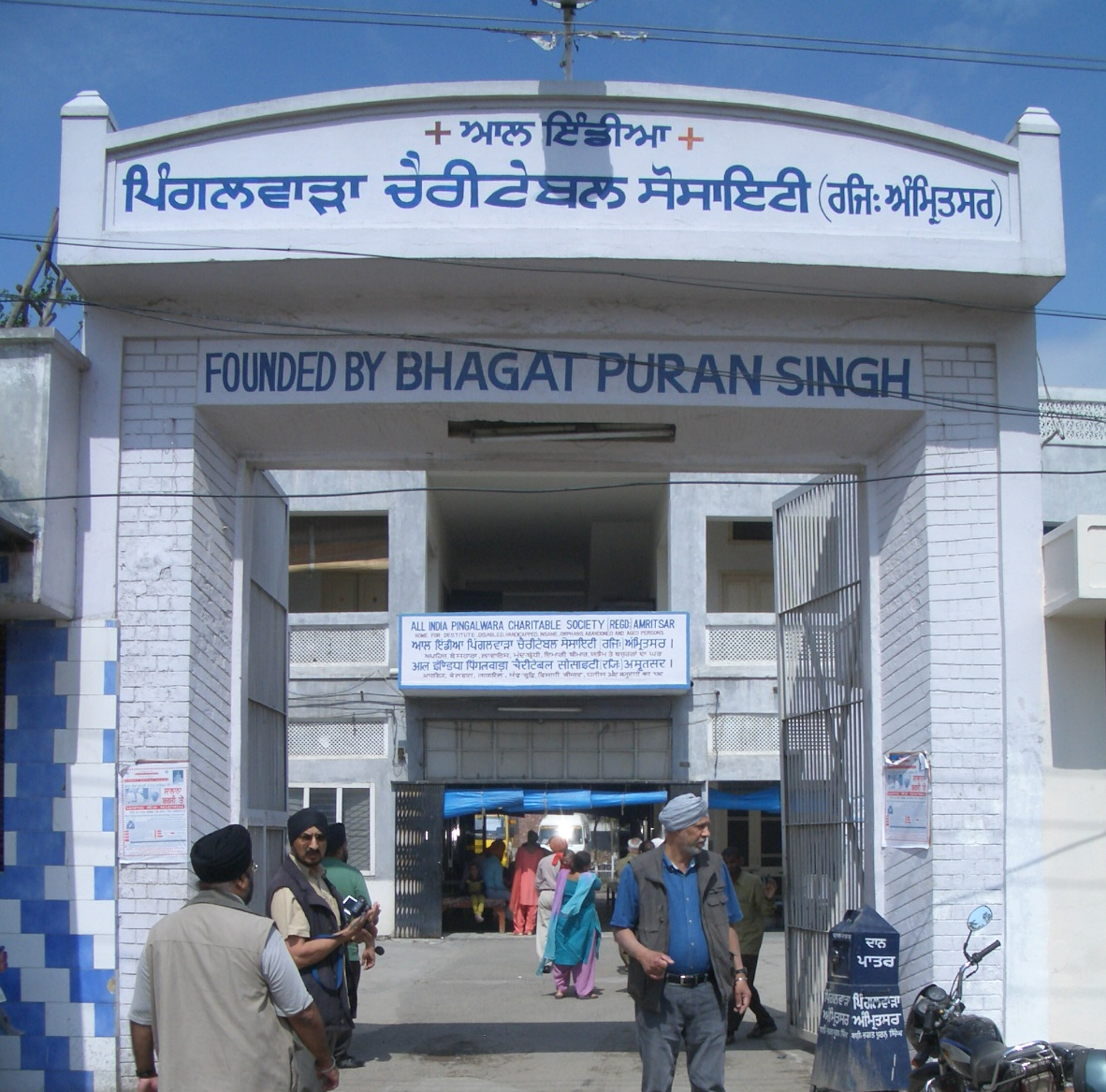
Pingalwara was the name given to a humble house for the destitute in Amritsar in northern Indian state of Punjab.
Sikhism promotes a duty of care for the weak in society; this institute is a result of the vision of one person derived from the words of the Sikh Gurus on this issue.
In the early 1900's, it was an original idea of the founder, Bhagat Puran Singh to catered for the people who had been rejected by society.
It was initially an ad-hoc facility for the disabled; the mentally ill; the dispossessed; generally for people who were no longer accepted by anyone in society.
Bhagat Puran Singh built this institute literally single-handed with the ideals of his mother as his driving force; the message of Gurbani as a beckon and the generosity of the Punjabi society as his safety net and hunting ground. He begged; worked as hard as he physically and mentally could; resorted to whatever options were available to care and provide for his "patients" just like a father or mother would care and provide for his children.
No barrier or hurdle could stop him in his effort to care for these "community rejects". He left no stone unturned to bring some dignity to the lives of individuals who had no one in this world except this saint. .....More
view – talk – edit – history
- July 20
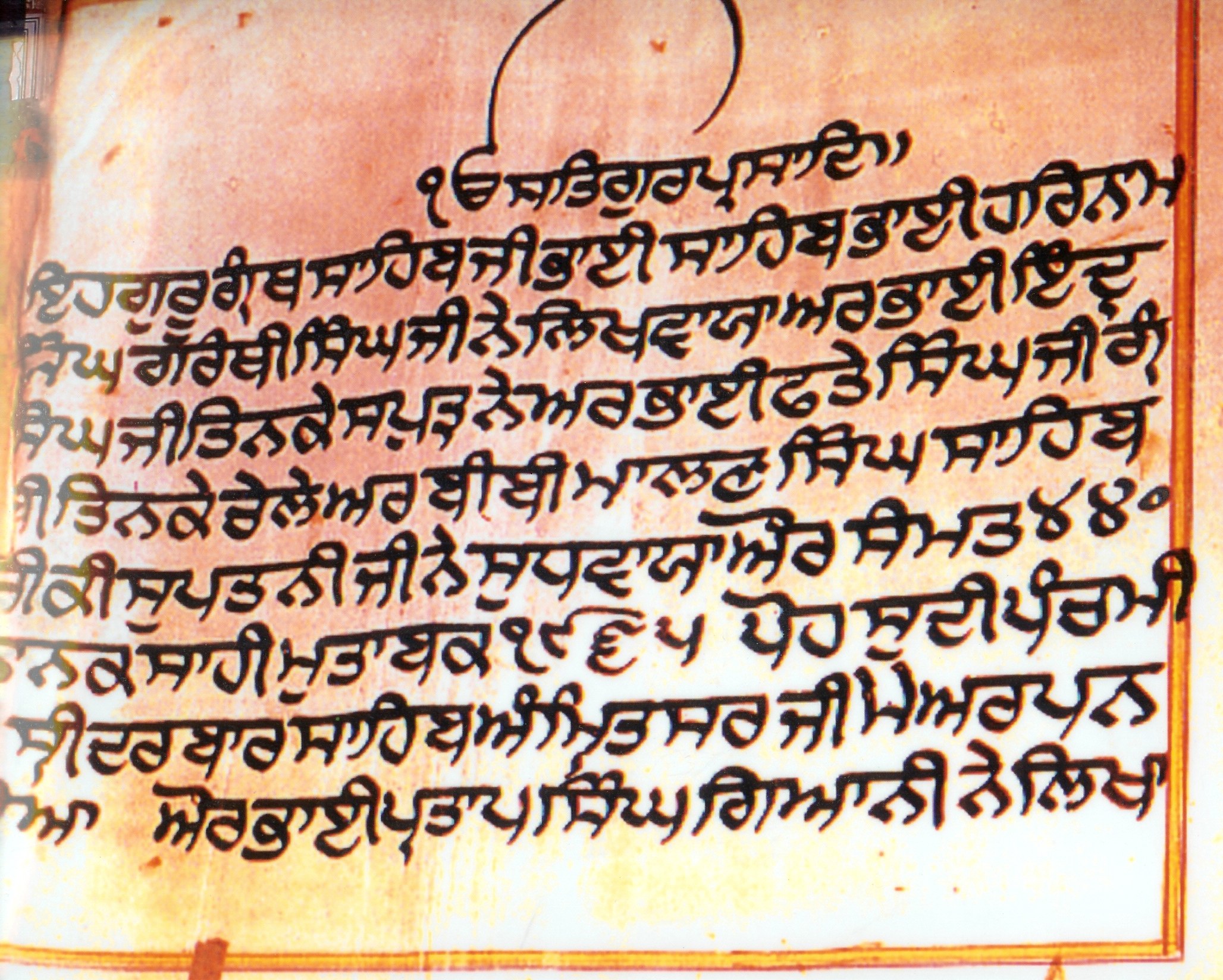
The editorial pattern of Guru Granth Sahib is the gift of the illustrious Guru Arjun Dev. The current volume of the Granth (total pages 1430) follows in the main the editorial scheme set by the Fifth Guru, with addition of Guru Tegh Bahadur’s Bani-compositions including his verses in Raag Jaijavanti.
The first recension popularly known as the Adi-Granth comprised three broad divisions: (a) the liturgical section with prayers of daily routine; (b) the musical section that is by far the largest part (1340 pages of the present edition); (c) the miscellaneous part of compositions which are not set to Raag measures but dwell on various poetical metres.
The contributors of the Granth include six Gurus, 15 Bhagats, 12 Bards (Bhatts) plus one Dum, a couple of associates of the Gurus, making a total of 36 authors.
The verses composed by eleven Bhatts in the Swayya metre are to be found in the Miscellaneous division of the holy Granth, which starts with Sahaskriti Saloks, followed by Gatha, Phunhas, Chaubolas and Saloks of Bhagat Kabir and Shiekh Farid. .....More
view – talk – edit – history
- July 21
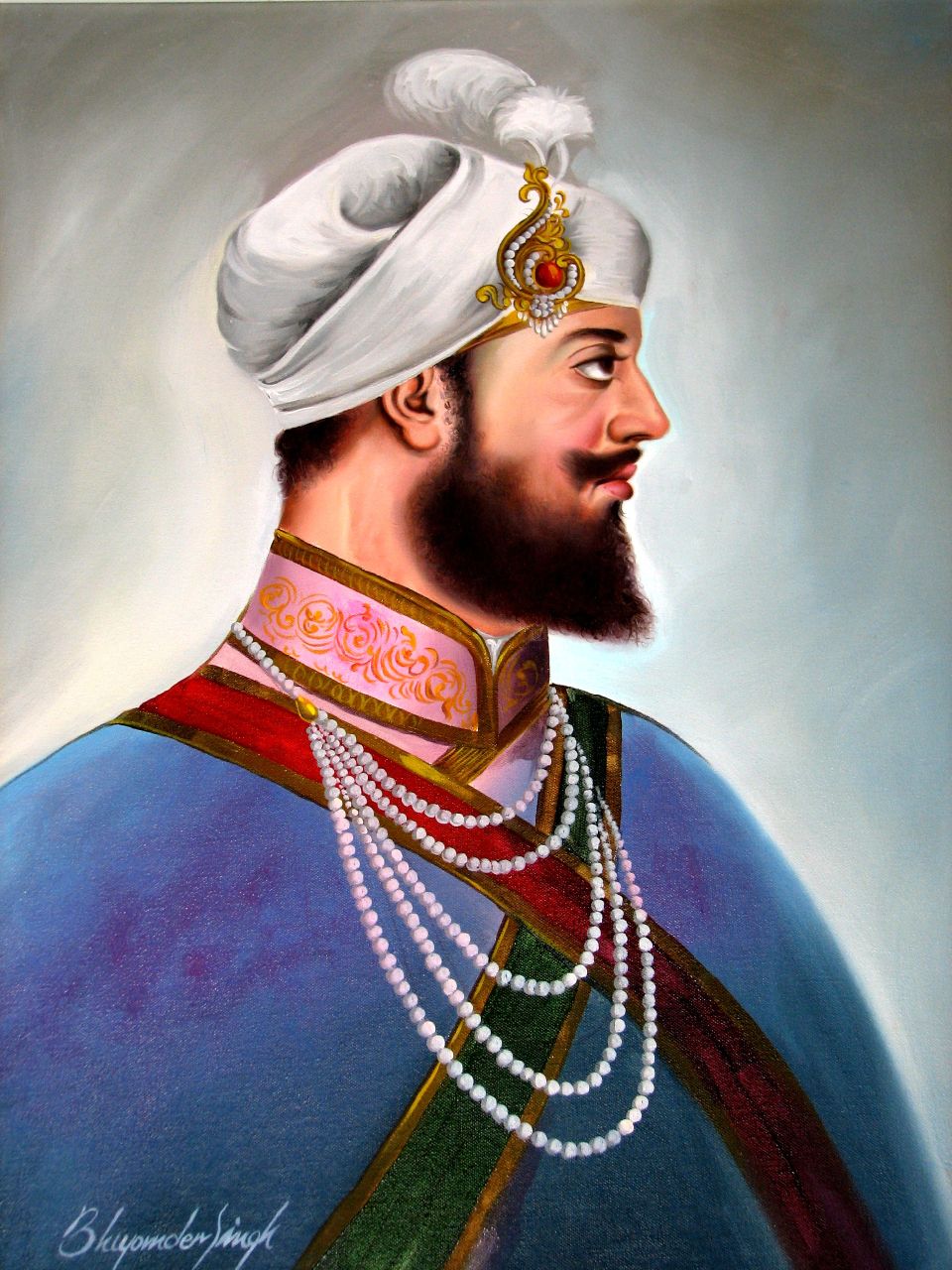
For many years now, the Sikh community worldwide has honoured the sixth Guru's vision of Miri and Piri, celebrating this vision on 21 July every year by calling this day, Miri Piri Divas.
Miri: This word has been derived from the Persian word - “miri”, which itself comes from the Arabic “amir” which literary means commander, governor, lord, prince, etc, and signifies temporal power, "political" or "material" power.
Piri: This word has also been derived from the Persian word - “pir” literary meaning saint, holy man, spiritual guide, senior person, head of a religious order and stands for spiritual power or moral authority. In Sikhi, the words miri and piri are frequently used together.
Miri Piri: The adoption of the term “miri piri” in the Sikh tradition has been made to connote the temporal and spiritual components of life; the materialist concept of human existence and the spiritual aspect of human life. .....More
view – talk – edit – history
- July 22
Langar or free kitchen was started by the first Sikh Guru, Guru Nanak Dev Ji. It is designed to uphold the principle of equality between all people of the world regardless of religion, caste, colour, creed, age, gender or social status.
In addition to the ideals of equality, the tradition of Langar expresses the ethics of sharing, community, inclusiveness and oneness of all humankind. "..the Light of God is in all hearts." (sggs 282).
For the first time in history, Guruji designed an institution in which all people would sit on the floor together, as equals, to eat the same simple food. It is here that all people high or low, rich or poor, male or female, all sit in the same pangat (literally "row" or "line") to share and enjoy the food together.
The institution of Guru ka Langar has served the community in many ways. It has ensured the participation of women and children in a task of service for mankind. Women play an important role in the preparation of meals, and the children help in serving food to the pangat. Langar also teaches the etiquette of sitting and eating in a community situation, which has played a great part in upholding the virtue of sameness of all human beings; providing a welcome, secure and protected sanctuary. .....More
view – talk – edit – history
- July 23
Every year on 23rd July, the Sikhs celebrate the birthday of their eighth Guru, Guru Har Krishan - also fondly called "Bal Guru" ("Child Guru") as Guru ji attained Guruship at a young age of just over 5 years old. Each year during late July, huge celebrations are held at Gurdwara Bangla Sahib in Delhi, India to commemorate this auspicious day. It was at this location in Delhi where Guru ji stayed at Raja Jai Singh's bungalow during the reign of Mughal Emperor Aurangzeb.
Guru Har Krishan was born on July 7, 1656 at Kiratpur Sahib, Punjab, India and was the second son of Guru Har Rai and Mata Krishan Kaur Ji. When the Guru came to Delhi, he stayed at the bungalow of Raja Jai Singh. There was a severe smallpox epidemic and many thousands of people were dying. By Guru's blessing, the pool at Bangla Sahib, which is built at the site of Raja Jai Singh's bungalow provided cure for thousands of suffering people. Gurdwara Bangla Sahib is thus blessed by the healing powers of this eighth Sikh Guru. The tenth Sikh Guru, Guru Gobind Singh wrote in his famous "Vaar Sri Bhagauti Ji Ki" – "Remember Sri Harkrishan, whose vision dispels all pains". This shrine is not only visited by thousands of Sikhs but also people of other faiths. .....More
view – talk – edit – history
- July 24
Baba Atal Rai (c. 1619 - 23 July, 1627) was born in 1619 AD at Amritsar to Guru Hargobind sahib, the sixth Sikh Guru and Mata Mahadevi, daughter of Bhai Daya Ram Marwah of Mandeala.
From early age he was intelligent, lively and a deeply religious boy. He was called 'Baba' because he carried a wise head over his young shoulders. (Here Baba means, wise old man).
He used to play every evening with his age-mates and tell them many wise things. Whatever he said, even in jest, had some deep humane meaning. All his playmates loved, respected and obeyed him. Guru Hargobind was specially fond of him.
The Guru used to take him in his lap, cuddle him and say, “God has given you much power. Don’t make a show of it. If you have to use it, use it with caution and wisdom. Don’t waste it away on little things”. Baba Atal Rai used to say in reply, “O True King, all the power that I possess I have obtained from you. Your storehouse can never be empty. Therefore, I may use it to my heart’s content. It will never be used up.”
Bibi Kaulan, the daughter of Lahore’s Qazi had been a dedicated devotee of Guru Hargobind sahib. Kaulsar Sarovar (Pool) was built by Guru Hargobind sahib in her memory. .....More
view – talk – edit – history
- July 25
The Battle of Hargobindpur was, the second battle in which Guru Hargobind and his Sikh Risaldari (comrades), fought the forces of Abdullah Khan the Mughal governor, (Subedar) of Jalandhar.
This historic war happened in September 1629 (according to some chronicles 1628).
The battle was fought near the village of Ruhela where Guru Hargobind and his warriors defeated the Mughal force commanded by Turkish chieftains and the governor Abdullah Khan.
After the victory the area in which the battle was fought became the town of Sri Hargobindpur.
Much earlier a new village called Hargobindpur had been established near the village of Ruhela, on the bank of the Beas river by Guru Arjan Dev.
The fifth Guru named this new village in honour of his young son Hargobind. However, after the arrest, torture and martyrdom of Guru Arjun Dev, the area fell under the control of Diwan Chandu Lal, an influential Hindu banker and chief minister of Emperor Jahangir. .....More
view – talk – edit – history
- July 26
Sikhism and the Environment
"The Lord infused His Light into the dust, and created the world, the universe. The sky, the earth, the trees, and the water - all are the Creation of the Lord. ||1||" SGGS page 723
The Sikh scripture, Guru Granth Sahib, declares that the purpose of human beings is to achieve a blissful state and to be in harmony with the earth and all of God's creation. It seems, however, that humans have drifted away from that ideal. For the earth is today saturated with problems. It is agonizing over the fate of its inhabitants and their future! It is in peril as never before. Its lakes and rivers are being choked, killing its marine life. Its forests are being denuded. A smoky haze envelops the cities of the world. Human beings are exploiting their fellow human beings.
The Sikh Gurus showed the world the way to live in harmony with the environment and all their communities were developed in adherence to this principle. Guru Har Rai, the seventh Sikh Guru developed Kiratpur Sahib as a town of parks and gardens. " ....Continued.
view – talk – edit – history
- July 27
On 28 November every year, the Sikhs celebrate the birthday of the third son of Guru Gobind Singh, Sahibzada Zorawar Singh (28 November 1696 - 26 December 1705).
He was born to Mata Jito ji (also known as Mata Sundari ji) at Anandpur on this sacred day in 1696 and was barely nine years old at the time of the evacuation of Anandpur on the night of 5-6 December 1705.
Since the death of his mother, Mata Jito, on 5 December 1700, his grandmother Mata Gujari who had been especially attached to young Zorawar Singh and his infant brother, Fateh Singh took charge of both of them as the column moved out of Anandpur.
While crossing on horseback the rivulet Sirsa, then in flood, the three were separated from Guru Gobind Singh and the main party of Sikhs. .....More
view – talk – edit – history
- July 28
In December 2004, while I was studying in London, I visited the Gurdwara Sahib in Southall and Giani jee was doing Katha (discourse on Gurbani). Giani jee's words stuck in my mind. He explained how Gurbani says, "Waheguru resides WITHIN ALL and that Waheguru FORGIVES and CLEANS the sins or filth of a sinner."
He went on to explain how at the end of Ardas we all say together, "naanak naam chardee kalaa, tere bhaane sarbat da bhalaa". Yes, we say, ‘SARBAT DA BHALAA’. We ask for the blessing of ‘ALL’. Guru Gobind Singh Sahib did NOT say, "I ask for the good of all EXCEPT for AURANGZEB who cowardly murdered my two young sons." No. When we do Ardas we do not say, "Sarbat Da Bhalaa, but NOT that person who swore at me last week… I don’t want his bhalaa (good)."
A beautiful analogy was given to illustrate that there is good within all. We say Waheguru is within all, but from personal experience seeing Waheguru in everybody is difficult at times. .....More
- July 29
Structure of Guru Granth Sahib
The Guru Granth Sahib begins with the word "Ek Onkar" – The All Pervading Being. From this Word to the tenth Word “Gur-parshad” is called the Mool Mantra. After this is the rest of the composition called the Japji composed by Guru Nanak Dev. This comprises 38 Pauris or stanzas, a Prologue and an Epilogue. This is one of the morning prayer of the Sikhs.
The next composition has two parts - (1) "So Dar" and (2) "So Purkh". The Bani, "So Dar" contains 5 Shabads and "So Purkh" contains 4 Shabads. This form most of the evening prayer of the Sikhs and is called the Rehras. After this is the Bani called Sohila (full name, Kirtan Sohila), which contains 5 Shabads and is the bed-time prayer.
Within it's 1430 pages, most of the Shabads (hymns) of the Sri Guru Granth Sahib are arranged in thirty-one Ragas, the traditional Indian musical measures and scales. ....Continued.
view – talk – edit – history
- July 30
Free-for-all is a term generally used to describe chaos. And chaos is a word one could use to describe much of Delhi.
But at the Gurdwara Bangla Sahib kitchen, a Sikh temple which serves meals to around 10,000 people every single day, there's not a trace of chaos. And the food is free for all.
This week, Alex and I are at the Doors of Perception conference in India, where the theme is "Food and Juice." It's an exploration of food systems worldwide, and the energy required to make them go.
On the first full day of the conference, the fifty-odd attendees split into small groups to go exploring the city of Delhi through its food culture. A number of groups focused on the prolific street vendor network, several looked at Delhi's water, and my group of nine went to Gurdwara Bangla Sahib to see how they achieve the daunting task of feeding thousands of people in single a day. .....More
- July 31
Every important Sikh ceremony is performed in the presence of the holy Guru Granth Sahib. The ceremonies which are most important to a Sikh are:
Baptism or Amrit Ceremony
Marriage or Anand Karaj
The Death Ceremony Antim Sanskar
Naming Ceremony – Naam Karan:- Sikhs name their children only after they are born, as it is customary to bring the child into the presence of the Holy Granth as soon as it is convenient and when the mother is well enough to go to the Gurdwara. The Holy Granth is opened at random and a verse (Shabad) from the pages opened is read. The first letter of the first word of the 'Shabad' (hymn) on the page is chosen as the initial letter of the child's name. Now this could be any letter of the alphabet. For example if the first letter is 'S' then any name such as Surinder, Surjit, Sukhdev, Satnam, Sarabjit, Satwant, Sukhwinder, etc could be chosen by the parents to their liking. See Sikh Names to see over a thousand Sikh names. .....More
view – talk – edit – history
